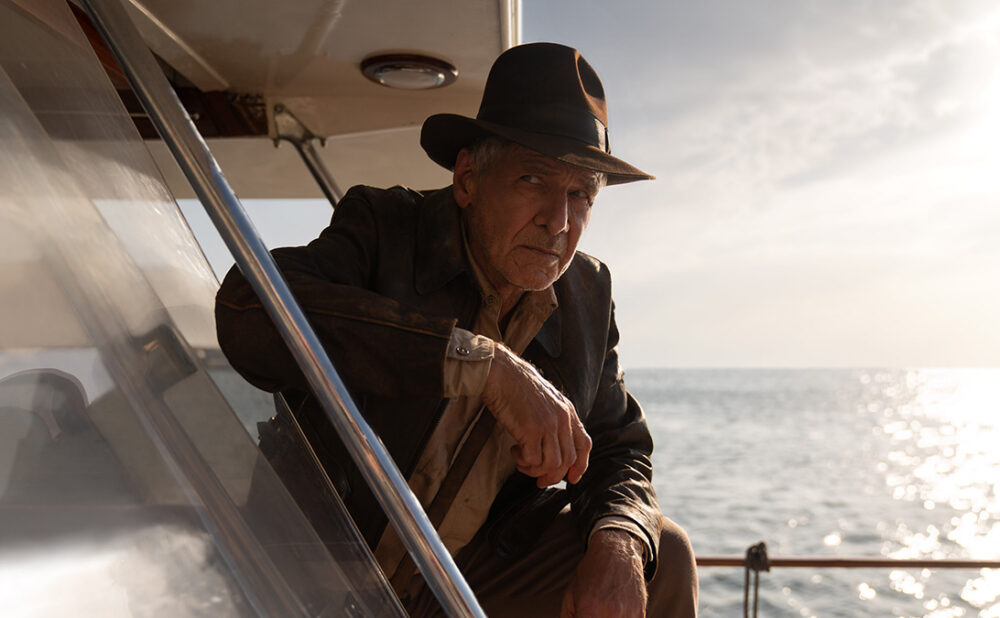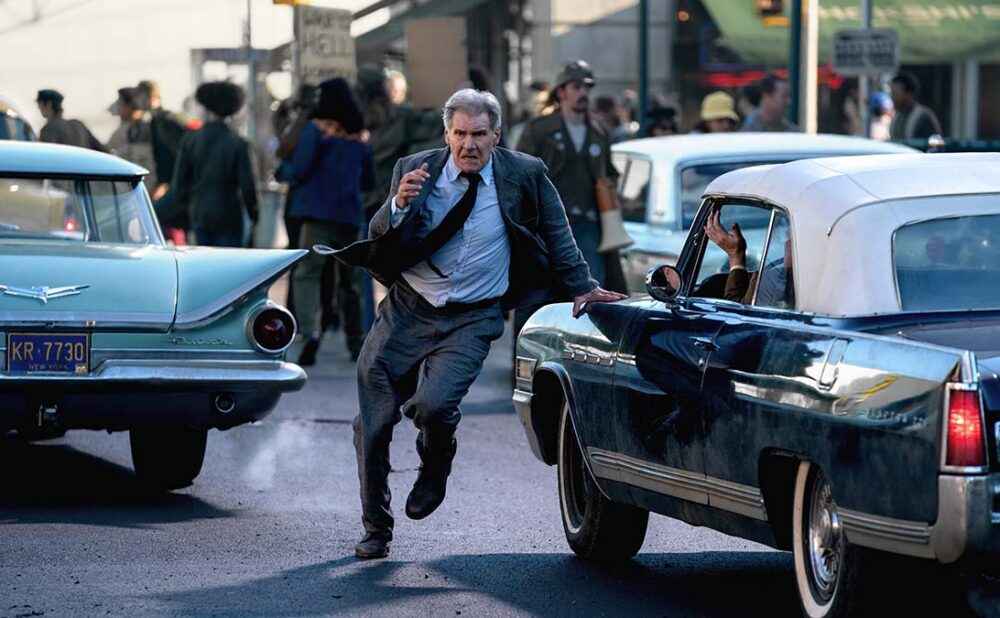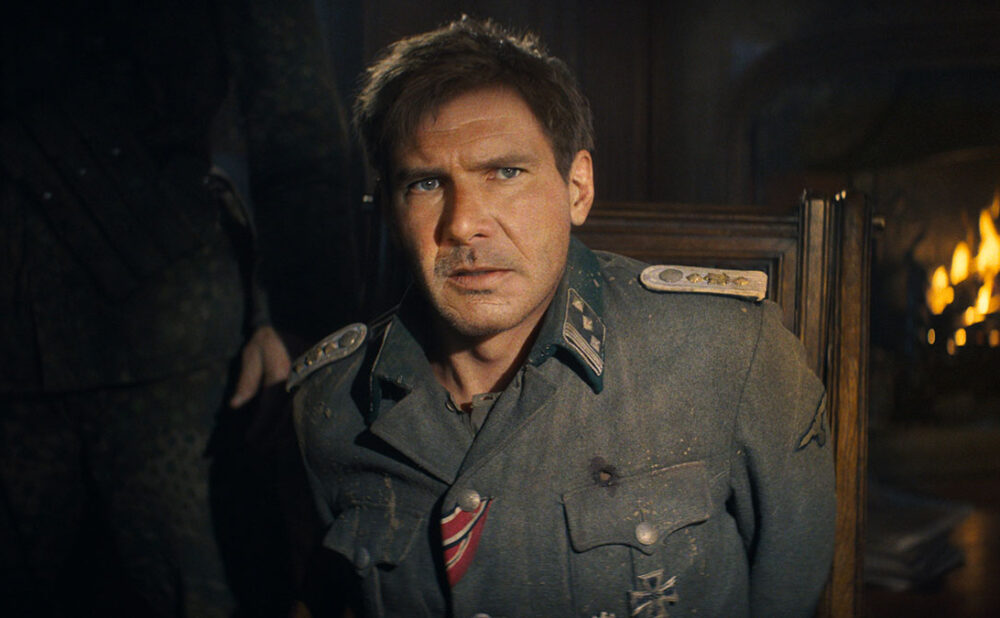Latest ‘Indiana Jones’ a serviceable reboot of beloved franchise
Anti-aging technology a real star of the film .
Indiana Jones and the Dial of Destiny
Where: In theatres
What: Movie, 142 mins.
When: Fri., June 30
Genre: Family
Rating: NNN (out of 5)
Why you should watch: A serviceable reboot of the iconic action/adventure franchise, Indiana Jones and the Dial of Destiny is amusing enough to appeal to fans and novices alike.
Somehow, I missed seeing the Indiana Jones films as a kid. I was mostly disinterested in any films that seemed marketed for boys, and I guess my older brother did not hold much sway over what we watched. So, it was interesting settling in for Indiana Jones and the Dial of Destiny, the fifth in the franchise and the second reboot, with few expectations and no nostalgic attachment. I found a perfectly serviceable action film: competently made overall, surprisingly well-paced (considering the runtime) and with a chaotic chase scene through a parade that involves an amusingly improbable escape on horseback. But after watching the original trilogy in the days before, it struck me how so few of the action sequences and new characters in this remake felt memorable. It’s hard to imagine that much of the film will be remembered beyond the cinema lobby.
The film opens in the franchise’s familiar fashion, with Indiana Jones (Harrison Ford) sneaking into a place he’s not supposed to be to steal a precious artifact and prevent the Nazis from using its ancient power. Here the place is a train speeding through the French Alps, the artifact is the Antikythera, a clock-like mechanism built by Archimedes himself, and the Nazi in question is Jürgen Voller (Mads Mikkelsen), a brilliant and ruthless mathematician. The sequence itself is entertaining if a bit unremarkable, but its most compelling element is the de-aging effects that transform the 80-year-old Ford into a 45-year-old Indy. The technology has improved in the years since it was used extensively in Martin Scorsese’s The Irishman (2019), and the effect is surprisingly seamless (if you don’t look at his eyes for too long). More than simply a narrative tool that allows the film to jump through timelines, de-aging has given us the ability to restore stars to their younger selves to try and recapture an earlier era and, in the process, relive our own youths. But there’s a moment when the de-aged Indy climbs onto the roof of the train and we cut to a wide shot to see an obvious CGI animation of a spry young man racing along the train car before cutting back to Ford. It’s a small moment, but it effectively breaks the illusion and highlights what the film is hoping to recreate and falls short.
Thankfully, the film soon jumps ahead 25 years, to a 70-year-old Indy living in a tiny apartment in New York City and being gently hustled into retirement from his professor position. He’s approached by Helena (Phoebe Waller-Bridge), the daughter of his former partner Basil Shaw (Toby Jones) who went mad trying to crack the code of the Antikythera and became convinced that it had the ability to jump through time. Helena is hoping to find the missing half of the artifact and continue her father’s legacy, but it turns out her motives aren’t so noble, and Indy ends up chasing her halfway across the globe. The film from there is (not unpleasantly) boilerplate, with the familiar car chases, double-crosses, one-liners and daring excursions into insect-filled caverns. But among all the standard fare is an ambitious ending, which I won’t spoil, that goes further into the unknown than any in the franchise before. But there is, overall, a sense that the iconic formula and character have been wrung out, and Ford’s signature curmudgeonly demeanour, which barely disguised a certain joy-de-vivre, reads here as just plain fatigue. And as Helena, the capable Waller-Bridge — who has followed up her celebrated series Fleabag with a gig writing punch-ups on the last James Bond movie — is more smug than charming and her performance feels out of step with the other actors, including Antonio Banderas, Ford and Mikklsen who are paying their characters, more or less, straight.
If there is a benefit to my lack of childhood affection for Indiana Jones, it’s that I can easily approach Dial of Destiny on its own terms, without feeling disappointed or betrayed (as I think many fans did with the 2008 reboot, Kingdom of the Crystal Skull.) But I can certainly see the ways that Dial of Destiny falls short of its predecessors, if only because it is striving so hard to emulate them. There is Helena’s roguish young accomplice, Teddy (Ethann Isidore), who is a version of Short Round (Ke Huy Quan) from 1984’s Temple of Doom if he hadn’t been given any funny lines. There is also a scene in which Indy descends into a sunken ship full of eels, a nod to his well-documented fear of snakes, which doesn’t have the suspense or humour of a similar scene in 1981’s Raiders of the Lost Ark. And nothing in the film (or, I believe, in any Indiana Jones movie) comes close to matching the sheer terror and visual impact of the sacrifice scene in Temple of Doom. It is probably unfair to compare this sequel to its originals — which were directed by Steven Spielberg, one of Hollywood’s most skilled and influential filmmakers — but in an era of reboots and remakes, where nothing ever seems to end, it’s hard not to feel like some things really should be left buried.








